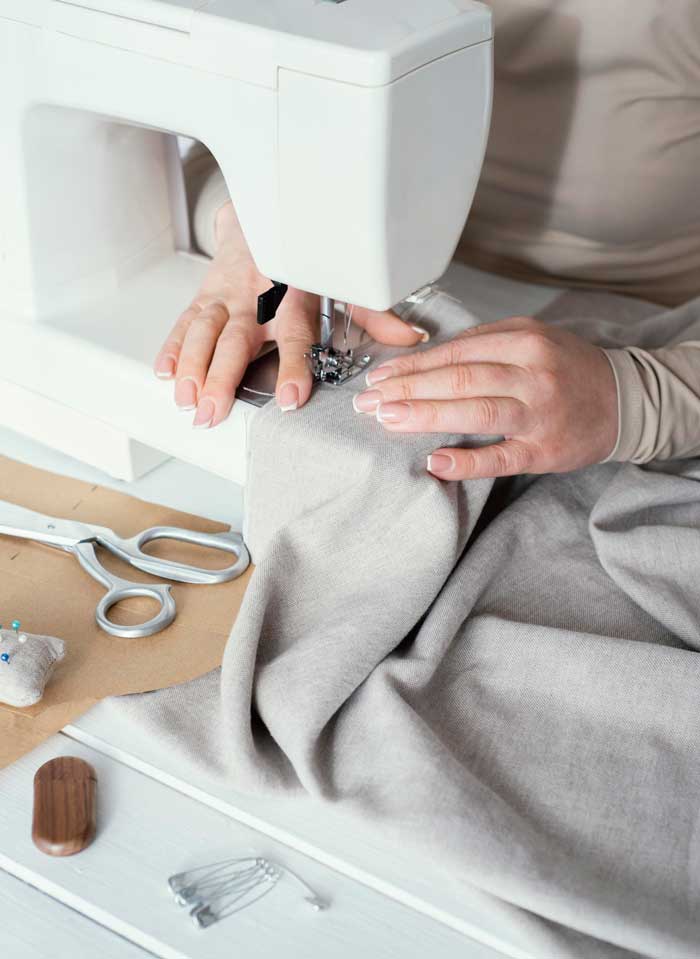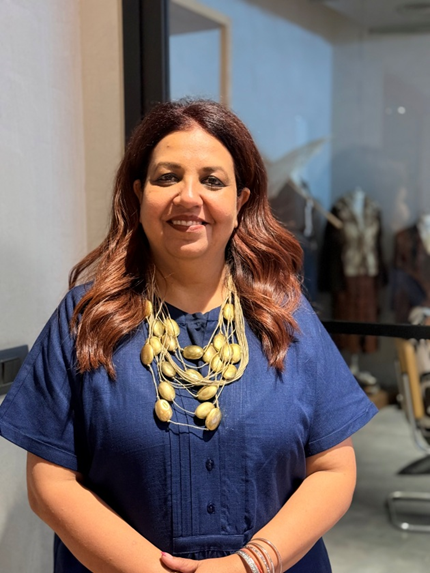
How sewing and handloom are driving conscious consumerism
Let’s be honest, the weekly fashion drops, changing trends, and “colours of the season” tempt all of us to yearn for a wardrobe makeover. Fast fashion moves at breakneck speed, with racks refilling every week—clothes designed to be worn just a few times before ending up at the back of a closet, or worse, in a landfill. The price tags may be low, but the environmental costs are staggering.
Globally, the fashion industry produces more than 80 billion garments annually, with consumers in countries like the US buying 60 per cent more clothing than in 2000, while keeping each piece for only half as long. This throwaway culture fuels an industry responsible for 10 per cent of global carbon emissions—more than the aviation and shipping industries combined.
The environmental fallout doesn’t stop there. The industry heavily drains water sources and pollutes rivers. Even laundering clothes releases 500,000 tonne of microfibres into the ocean each year—the equivalent of 50 billion plastic bottles. Dyeing and finishing account for 36 per cent of the industry’s pollution, followed by yarn preparation (28 per cent) and fibre production (15 per cent). Cotton farming, particularly, hits freshwater supplies hardest, with fossil-fuel-heavy production processes exacerbating resource depletion. If nothing changes, textile manufacturing emissions are projected to rise by 60 per cent by 2030, according to the United Nations.
Against this backdrop, a countermovement has been gaining momentum: slow fashion. Built on the philosophy of buying less, choosing well, and making garments last, slow fashion values quality craftsmanship and timeless design over disposable trends. It promotes fair wages, artisan dignity, and transparent, sustainable supply chains, while minimising waste through small-batch, intentional production
Stitching a revolution
For centuries, sewing was a survival skill. A tear meant repair, and fabric scraps became opportunities. Clothing wasn’t just worn; it was cherished, reimagined, and passed down through generations. Today, sewing is experiencing a renaissance—not only as a method of repair but also as a medium for creative self-expression. From subtle alterations to full-blown redesigns, sewing empowers individuals to personalise and extend the life of their garments, keeping textiles out of landfills.
Designers are also embracing upcycling in a big way. According to data, 31 percent of fashion brands now incorporate textile waste into new collections.[i] At the consumer level, upcycling merges creativity with sustainability and it’s a chance to experiment with personal style while cutting waste. It also makes fashion feel more personal as each piece carries its own story, shaped by the hands that reimagined it.
Sewing is also emerging as a pathway to independence. Across communities, especially among women and rural artisans, home-based creators are turning their skills into viable businesses — offering custom clothing, teaching workshops, and building niche brands. Sewing doesn’t just foster income; it nurtures autonomy and strengthens local economies.
While sewing puts creative power directly in the hands of individuals, handloom weaving sustains entire communities of traditional artisans. It’s slow fashion at a community scale, where every meter of fabric is made without the heavy machinery, synthetic fibres, or mass-production waste that define fast fashion. The process is human-paced, resource-light, and inherently sustainable. It is one of humanity’s oldest crafts, and in the slow fashion era, it showcases how heritage and sustainability can work hand in hand. Take Gujarat’s Kutch region: the cultivation of kala cotton, a native, organic, drought-resistant variety, has staged a remarkable comeback. Not only are weavers now generating impressive monthly revenues, but their wages have quadrupled. These crafts do more than just produce beautiful fabrics. They protect cultural identity, supports dignified livelihoods, and preserve traditional skills that industrialization continues to threaten.
The shift in consumer preferences
Slow fashion’s rise isn’t just an artisan movement—it’s a consumer revolution. Valued at $9.52 billion in 2024, the global slow fashion market is projected to reach $46.70 billion by 2032, growing at a striking 22 per cent annually.
Part of this growth is driven by technology like blockchain, which provides supply chain transparency, and by the increasing popularity of upcycling. Gen Z, in particular, is leading the shift. Numerous surveys indicate that younger consumers prefer low-impact clothing, with many avoiding brands that lack sustainability credentials. They’re willing to pay more for eco-conscious products—but they’re also smart, turning to second-hand and vintage clothing to merge values with affordability.
Once seen as niche, resale fashion has become a dominant force. In 2024, the global second-hand clothing market grew by 15 per cent to reach $227 billion—accounting for nearly 9 per cent of all global fashion sales. Among younger shoppers, it’s even more mainstream: 68 per cent of under-30s bought second-hand in the past year, drawn by the promise of unique, sustainable style. Platforms like Depop, Vinted, and ThredUp are turning resale into a social experience, where each purchase comes with a story.
The appeal of slow fashion for younger consumers goes beyond aesthetics and is a reflection of values. For many in Gen Z, fashion is about identity and responsibility. Still, the shift isn’t without tension as only 32 percent of global consumers consistently prioritize sustainability over affordability.[ii] The sweet spot lies in solutions that marry ethical production with accessibility, something sewing, handloom, and resale, all offer in different ways.
Weaving a future-proof industry
The beauty of slow fashion lies in its attainability. It doesn’t demand perfection. It might begin with mending a hem, sewing on a lost button, or choosing handloom over mass-produced polyester. Each action supports skilled artisans, reduces environmental stress, and adds a layer of meaning to what we wear. These small, intentional choices create ripple effects. Fewer purchases of better-quality garments reduce overproduction pressure. Supporting local weavers sustains cultural heritage. Choosing second-hand lessens the demand for virgin textiles. It’s change at a human pace—woven, stitched, and passed along.
Fast fashion’s problems are real, but not irreversible. Sewing and handloom offer an alternative rooted in skill, culture, and care—a model that feels more relevant than ever in a world anxious about waste and climate change. When you wear a hand-stitched jacket or a handwoven scarf, you’re not just making a fashion statement. You’re wearing a story. A tradition. A quiet rebellion against disposable culture.
So the next time you feel the pull of a trendy new purchase, pause. Imagine instead the rhythm of a loom or the precise movement of a needle in skilled hands threading life into cloth. That’s where real style begins—and where it lasts.
About the author:




